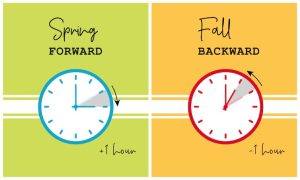This Just In: Advertising No Longer Relevant
January 7, 2015
You know that feeling you get when you’re watching your favorite show or an addictive movie on TV and a commercial bites into the good parts?
It’s aggravating to have to sit through seven minutes of mindless drivel that is attempting to sell you things or attempting to get you to sign up for organizations or gyms you don’t care about at all.
Everyone understands that advertising is how companies get their products out to the public, but we, as viewers, spend more time mocking or laughing at the ads than we do paying attention to what they’re selling. We don’t care. It’s as simple as that. We aren’t going to pick up the phone and buy 16 Snuggies or run out to pick up ziplock bags that are green; it’s a waste of their funds and our time.
Everyone hates advertisements. None of us like being interrupted by someone trying to sell us baby toys when none of us have kids. So why run ads if no one is watching? Well, as I stated earlier, advertising is one of the primary sources of revenue for a company. However, when no one actually watches commercials, sans those rare few that are actually entertaining – though most don’t really notice what is being sold in those, companies are, essentially, just throwing their money away on an old-school system. It really doesn’t make much sense.
TV isn’t the only way advertisements interrupt our entertainment, however. It’s not surprising to have 15 minutes of useless ads on the radio and one song between each 15-minute ad block. The radio is supposed to be for music, not McDonald’s selling their new fatty, greasy burger that isn’t even good for you anyway. Again, I know that ads create revenue, and companies have yet to come up with a better system, but their goal is not met when their ads drive listeners away.
The average TV show block is 36% commercials and advertisements. This means that most 30-minute shows are only 23 minutes of actual content and most hour shows are only 40-44 minutes of content. While people have shown that they can “click” from station to station during commercials in order to alleviate the frustration they cause, others have taken stronger steps and just cut regular TV out of their life. These people have turned to streaming sites such as Hulu, which has commercial breaks but these average only about a minute in length during any length show. Perhaps the most famous of the streaming sites, Netflix, has no commercials at all, but you do have to pay a monthly membership fee.
Until regular television stations are able to limit the number of commercials they run, people will either have to just deal with it or pay for streaming services. Hopefully, companies will find new ways to advertise so that consumers don’t have to be inundated with their excessive, brain-numbing commercials.






































